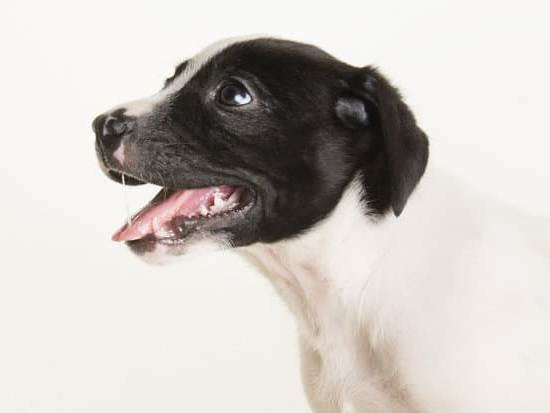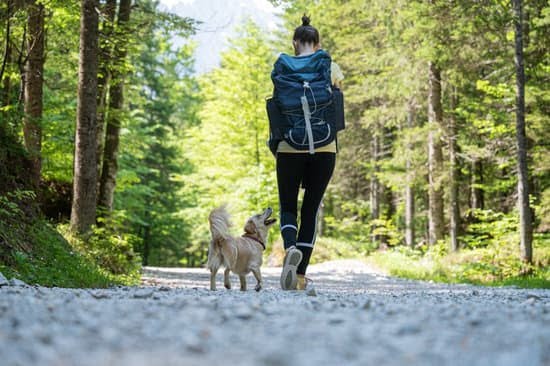Potty training is an essential aspect of owning any dog, but when it comes to Dachshunds, commonly known as Weenie Dogs, many owners find themselves facing unique challenges. These adorable and spirited little dogs have their own distinct nature that requires a specialized approach to potty training. In this article, we will delve into the world of potty training Weenie Dogs and uncover the secrets to successfully housebreaking these beloved pets.
Dachshunds are known for their long bodies, short legs, and larger-than-life personalities. Despite their small size, they possess a strong will and determination that can make potty training a bit more challenging than with other breeds. Understanding their unique nature is crucial in developing effective strategies for potty training.
One of the main factors that contribute to the difficulty in potty training Weenie Dogs is their bladder control. Due to their smaller size, Dachshunds have equally small bladders, which means their capacity to hold urine is limited compared to larger breeds. This often leads to more frequent urination and accidents if not properly managed. As a result, patience and consistency become key elements in successfully housebreaking your Weenie Dog.
Understanding the Unique Nature of Dachshunds
Dachshunds, also known as weenie dogs, are a unique breed with distinct characteristics that can impact their potty training process. Understanding the nature of dachshunds is crucial in effectively potty training these adorable little pups.
One important aspect to consider is their strong-willed nature. Dachshunds are often described as independent and stubborn, which can pose challenges during potty training. They may exhibit resistance or take longer to grasp the concept of going to the designated potty area. Patience and consistency are essential when working with a dachshund.
Another characteristic specific to dachshunds is their small size. Weenie dogs have relatively smaller bladders compared to larger breeds, meaning they will need more frequent opportunities to relieve themselves. Puppies especially have limited bladder control, so accidents are more likely to occur if not provided with regular bathroom breaks.
Additionally, dachshunds can be prone to anxiety and nervousness, which can affect their ability to be successful in potty training. It’s important for weenie dog parents to create a calm and positive environment during the training process. By providing reassurance, using positive reinforcement techniques, and maintaining a consistent routine, you can help alleviate any anxieties your dachshund may have.
Understanding these unique aspects of dachshunds will help you tailor your approach when potty training your weenie dog. The next section will provide tips on how to overcome common challenges faced by weenie dog owners during this process.
| Dachshund Characteristics | Implications for Potty Training |
|---|---|
| Strong-willed and stubborn | Requires patience and consistency |
| Small bladder size | More frequent bathroom breaks needed |
| Proneness to anxiety and nervousness | Requires a calm and positive environment during training |
The Truth About Weenie Dog’s Bladder Control
Dachshunds, also known as weenie dogs, may have a unique appearance with their long bodies and short legs, but they also have unique bladder control. Understanding the truth about a weenie dog’s bladder control is essential for successfully potty training them.
Weenie dogs have small bladders in proportion to their body size, which means they have less capacity to hold urine compared to larger dog breeds. This smaller bladder capacity can make it more challenging for them to hold their urine for extended periods of time, especially when they are young puppies.
In addition to their smaller bladders, weenie dogs are prone to certain health issues that can further impact their bladder control. For instance, intervertebral disc disease is a common condition among dachshunds that can affect their ability to control their bladder. This disease causes pain and may result in urinary accidents.
Despite these challenges, it is important to note that with proper training and management, weenie dogs can still be successfully potty trained. It may take some patience and consistency, but understanding the unique nature of their bladder control will help guide effective potty training strategies.
| Weenie Dog’s Bladder Control |
|---|
| Small bladder capacity in proportion to body size |
| Predisposition to intervertebral disc disease |
Common Challenges in Potty Training a Weenie Dog
Stubbornness and Independence
One of the common challenges in potty training a weenie dog is their stubbornness and independence. Dachshunds are known for their strong-willed personalities, which can make them resistant to following commands or adapting to new routines. This can be particularly challenging when it comes to potty training, as they may ignore your cues or simply refuse to go outside when you want them to.
To overcome this challenge, it is important to approach potty training with patience and consistency. Set a regular schedule for bathroom breaks and stick to it as much as possible. Establish a designated spot in your yard where you want your weenie dog to eliminate, and consistently take them there every time they need to go. It may also be helpful to use positive reinforcement techniques, such as treats and praise, to encourage desired behavior.
Small Bladder Capacity
Another challenge in potty training weenie dogs is their relatively small bladder capacity. Compared to larger breed dogs, dachshunds have smaller bladders, which means they have a more limited ability to hold urine for extended periods of time. This can lead to frequent accidents indoors if they are not given enough opportunities to relieve themselves.
To address this issue, it is crucial to establish a routine that includes frequent bathroom breaks throughout the day. Take your weenie dog outside every few hours, especially after meals, naps, playtime, or other activities that may stimulate their need to go. By ensuring regular opportunities for elimination, you can minimize accidents indoors and help your pup develop good bladder control habits.
Misunderstanding Signals and Cues
Weenie dogs may present another challenge in potty training by misunderstanding signals and cues from their owners. Sometimes they do not fully grasp what is expected of them or fail to recognize certain signs that indicate they need to go outside. This can be due to a lack of clear communication or inconsistencies in training methods.
To overcome this challenge, it is important to establish clear and consistent signals for your weenie dog. Use specific words or phrases, such as “outside” or “potty time,” when you want them to go outside to eliminate. Be patient and persistent in using the same language and cues consistently.
Additionally, pay close attention to your dog’s body language and behavior patterns that indicate they may need to go, such as sniffing around or circling a particular spot. By learning to recognize these signals, you can reinforce the desired behavior and prevent accidents indoors.
Essential Potty Training Tips for Weenie Dog Parents
Potty training can be a challenging task for any dog owner, and weenie dogs are no exception. However, with some essential potty training tips specifically tailored to the unique nature of dachshunds, you can successfully navigate this adventure and set your furry friend up for success.
Patience is Key
One of the most important tips when it comes to potty training your weenie dog is to have patience. Every dog is different, and they all learn at their own pace. Some dachshunds may catch on quickly, while others may take a bit longer to grasp the concept. It’s important not to get discouraged or frustrated during the process. Instead, remain calm and consistent in your approach.
Establish a Routine
Creating a consistent routine is crucial when potty training your weenie dog. Dachshunds thrive on routine and predictability, so establishing set times for bathroom breaks can help them understand what is expected of them. Take your dachshund outside first thing in the morning, after meals and playtime, and before bedtime. By consistently bringing them to the same spot outside to eliminate, you are helping them associate that area with going potty.
Supervise and Prevent Accidents
Keeping a watchful eye on your weenie dog during the potty training phase is vital in preventing accidents indoors. Supervision allows you to anticipate when your dachshund needs to go outside based on their behavior or signals such as sniffing or circling. If you notice any signs that indicate they need to relieve themselves, immediately take them outside to their designated spot.
Additionally, it’s essential to confine your dachshund to a small area when you cannot supervise them closely. This will prevent them from having accidents in other parts of the house.
By following these essential tips for potty training your weenie dog, you can create a solid foundation for success. Remember to be patient, establish a routine, and supervise your dachshund closely. With time and consistency, your weenie dog will become fully house-trained and enjoy a lifetime of good potty habits.
Positive Reinforcement
Positive reinforcement is a crucial aspect of potty training weenie dogs. These small and stubborn creatures require patience, consistency, and positive rewards to motivate them to learn proper bathroom habits. By utilizing positive reinforcement techniques, you can make the potty training experience more enjoyable for both you and your furry friend.
One effective method of positive reinforcement is using treats. When your weenie dog successfully goes outside or in their designated potty area, reward them with a small treat as a way to reinforce their good behavior. Make sure the treat is something they love and only give it to them immediately after they have finished eliminating so that they associate the treat with the act of going potty.
Another strategy for positive reinforcement is verbal praise. Weenie dogs are intelligent creatures and thrive on praise from their owners. Whenever your dog successfully uses the appropriate spot for elimination, shower them with enthusiastic words of praise such as “Good job.” or “Well done.” By expressing your happiness and satisfaction through verbal affirmation, you are reinforcing their desired behavior and encouraging them to repeat it.
In addition to treats and verbal praise, another form of positive reinforcement is physical affection. Dogs crave attention and affection from their owners, so when your weenie dog successfully goes potty in the right place, don’t hesitate to give them a gentle pat or scratch behind the ears as a way of reinforcing their good behavior.
Physical touch can serve as an additional motivator for your dog and make them more eager to please you during the potty training process.
By implementing positive reinforcement techniques such as treats, verbal praise, and physical affection into your weenie dog’s potty training routine, you can create a positive association between going potty in the right place and receiving rewards. Remember to be consistent in your approach and patient with your furry friend. With time, dedication, and plenty of positive reinforcement, your weenie dog will become fully potty trained.
Potential Pitfalls and How to Overcome Them
While potty training a weenie dog can be a rewarding experience, it can also come with its fair share of challenges. Understanding these potential pitfalls and knowing how to overcome them is essential for successful potty training. Here are some common pitfalls you may encounter and practical tips on how to overcome them.
One of the most common pitfalls in potty training a weenie dog is inconsistency. Dogs thrive on routine, so if you’re not consistent with their potty training schedule, they may become confused and have accidents. To overcome this, create a designated potty area for your weenie dog in your yard or indoors using pee pads.
Take your dog to this area at regular intervals throughout the day, especially after meals, naps, and playtime. Avoid leaving them unsupervised during the early stages of potty training.
Another potential pitfall is punishment-based training methods. It’s important to avoid scolding or punishing your weenie dog for accidents as this can create fear and anxiety around the whole potty training process. Instead, focus on positive reinforcement techniques such as praising and rewarding your dog when they successfully eliminate in the designated area. Use high-value treats or verbal cues like “good job” or “good boy/girl” to reinforce desired behavior.
Additionally, many weenie dogs are known for having stubborn personalities which can present a challenge during potty training. If you find that your weenie dog is resisting or not showing progress, try adjusting your approach. Break down the training into small steps and be patient with your furry friend. Consistency and positive reinforcement will eventually lead to success.
Potty training a weenie dog may have its difficulties, but with patience, consistency, and positive reinforcement techniques, you can effectively overcome potential pitfalls. Remember that every dog is different and what works for one may not work for another. By tailoring your approach to your weenie dog’s individual needs and staying committed to the training process, you can achieve potty training success and set your furry friend up for a lifetime of good habits.
A Step-by-Step Guide to Potty Training Your Weenie Dog
Potty training a Weenie Dog may seem like a daunting task, but with the right approach and consistency, it can be successfully accomplished. Here is a step-by-step guide to help you through the process:
- Set Up a Designated Bathroom Area: Choose a specific spot in your yard or indoor space where you want your Weenie Dog to eliminate. This helps them to understand where they should go and prevents confusion.
- Establish a Routine: Dogs thrive on routine, so establish regular bathroom breaks throughout the day. Take your Weenie Dog out first thing in the morning, after meals, after naps, and before bedtime. Stick to these consistent times so your dog learns when it’s time to eliminate.
- Use Verbal Cues: Teach your Weenie Dog specific verbal cues for going potty such as “go potty” or “do your business.” Repeat these cues every time you take them to their designated bathroom area. Eventually, they will associate these phrases with going potty.
- Positive Reinforcement: Reward your Weenie Dog with treats and praise every time they successfully go potty in the designated area. This positive reinforcement will motivate them to continue using that spot.
- Supervise and Prevent Accidents: Until your Weenie Dog is fully trained, keep a close eye on them at all times or use baby gates to confine them to an area where accidents can be easily cleaned up. If you see signs that your dog needs to eliminate (sniffing the ground, circling), immediately take them outside or to their designated bathroom area.
- Consistency is Key: Consistency is crucial when potty training any dog breed, including Weenie Dogs. Stick to the routine you have established and reinforce good behavior consistently for optimal results.
Remember that each Weenie Dog is unique and may require different amounts of time and effort for successful potty training. Be patient, stay consistent, and soon enough, your Weenie Dog will learn where and when to do their business. With love, patience, and positive reinforcement, you can conquer the challenge of potty training your beloved Weenie Dog.
Celebrating Success
Creating a consistent routine is essential in potty training your Weenie Dog. By providing structure and consistency, you can help your furry friend understand when and where they need to go potty. This section will explore the importance of celebrating success and establishing a routine that works for both you and your Weenie Dog.
When your Weenie Dog successfully goes potty in the designated area, it is important to celebrate their accomplishment. Positive reinforcement can be a powerful tool in potty training, as it helps your dog associate going potty in the right place with praise and rewards. Whether it’s offering verbal praise, giving them a treat, or using a clicker to mark the desired behavior, these positive reinforcements can help solidify good habits.
Consistency is key when establishing a routine for potty training. Set specific times throughout the day for bathroom breaks and stick to them consistently. This includes taking your Weenie Dog outside first thing in the morning, after meals, before bed, and any other time when they may need to go. By following a consistent schedule, you are helping your dog learn when it’s time to go and reducing the chances of accidents indoors.
Another important aspect of creating a consistent routine is designating a specific spot for your Weenie Dog to do their business. Choose an area outside that is easily accessible and always take them there whenever it’s time for them to go potty. The familiar scent will help trigger their instinctual behavior. Be sure to clean up any accidents promptly inside the house so they don’t confuse it with their potty spot.
Consistency is Key
Potty training a weenie dog can be a challenging and frustrating process, but it is important to remember that consistency is key. Just like with any other aspect of dog training, maintaining good potty training habits for life is crucial in order to ensure long-term success.
Once you have successfully potty trained your weenie dog, the work doesn’t stop there. It is essential to continue reinforcing good habits and maintaining a consistent routine. Consistency means taking your dog out to the designated potty area at regular intervals throughout the day, especially after meals and naps. By doing this consistently, you are reinforcing the behavior you want to see and preventing accidents from happening inside your home.
In addition to maintaining consistency with potty breaks, it is also important to watch for signs that your weenie dog needs to go outside. These signs can include sniffing around, circling an area, or suddenly becoming restless. By recognizing these signals and responding promptly, you can prevent accidents from occurring indoors.
Another key aspect of maintaining good potty training habits for life is patience. Accidents may still happen occasionally even after your weenie dog has been successfully potty trained. It is important not to get frustrated or punish your dog for these accidents as it can disrupt their progress and create anxiety around potty training. Instead, remain patient and continue with consistent reinforcement of desired behaviors.
By staying consistent with potty training routines, recognizing your weenie dog’s signals, and remaining patient, you can help ensure that your pup continues to have good potty training habits for life. Remember that every dog learns at their own pace and may have occasional setbacks, but with love, patience, and consistency, you can set your weenie dog up for success in maintaining their potty training skills for years to come.
Frequently Asked Questions
How long does it take to potty train a Weiner dog?
The length of time it takes to potty train a Weiner dog can vary depending on several factors, including the dog’s individual personality and temperament, as well as the owner’s consistency and dedication to the training process. On average, it can take anywhere from a few weeks to a few months for a Weiner dog to become fully house trained.
It is important to establish a consistent routine, provide positive reinforcement for desired behavior, and be patient with any setbacks that may occur along the way.
What is the hardest dog to potty train?
While every dog is unique and may present their own challenges during potty training, some breeds are generally considered more difficult to train in this aspect than others. One breed often mentioned as challenging to potty train is the Basset Hound.
Basset Hounds are known for their stubbornness and independent nature, which can make them less responsive to traditional training methods. These dogs may require extra patience, consistency, and creative approaches when it comes to potty training.
Are weenie dogs easy to train?
Weenie dogs, also known as Dachshunds, possess intelligence and willingness to please their owners, making them generally easy to train in various areas, including potty training. However, just like any other breed or individual dog, there can still be variations in personalities and temperaments that could influence the ease of training.
Some Dachshunds may require additional time or effort during their potty training journey due to factors such as fearfulness or stubbornness. Overall though, with consistent positive reinforcement techniques and understanding their specific needs as a breed (such as frequent bathroom breaks due to their size), Dachshunds can often be successfully potty trained relatively easily compared to some other breeds.

Welcome to the blog! I am a professional dog trainer and have been working with dogs for many years. In this blog, I will be discussing various topics related to dog training, including tips, tricks, and advice. I hope you find this information helpful and informative. Thanks for reading!





